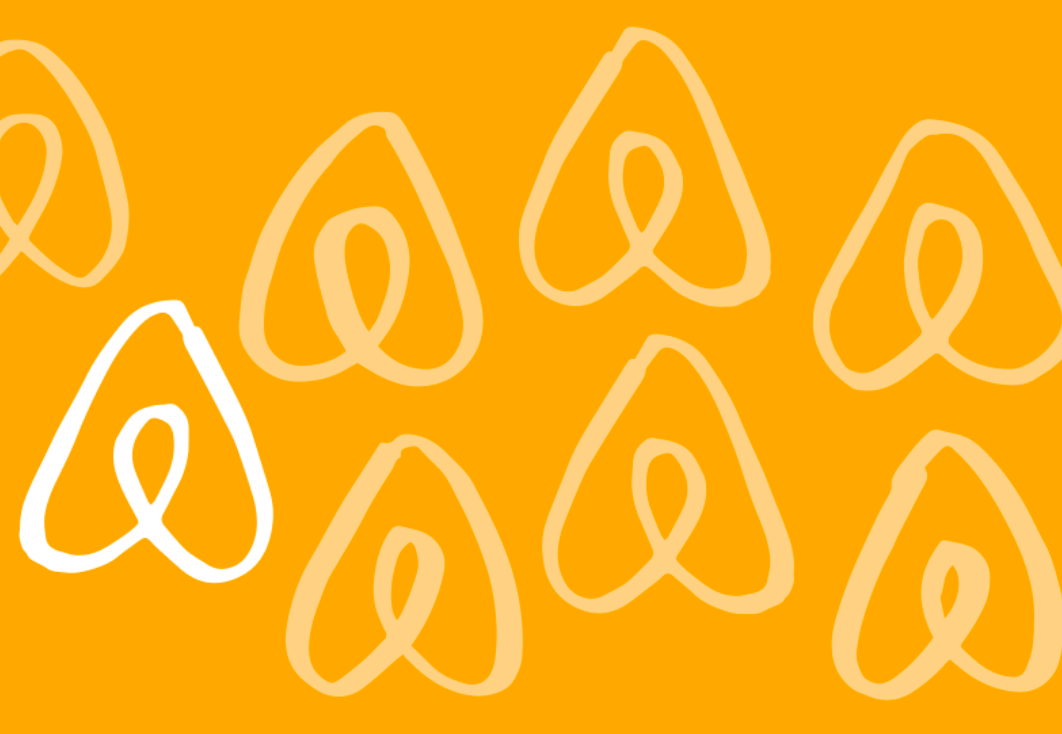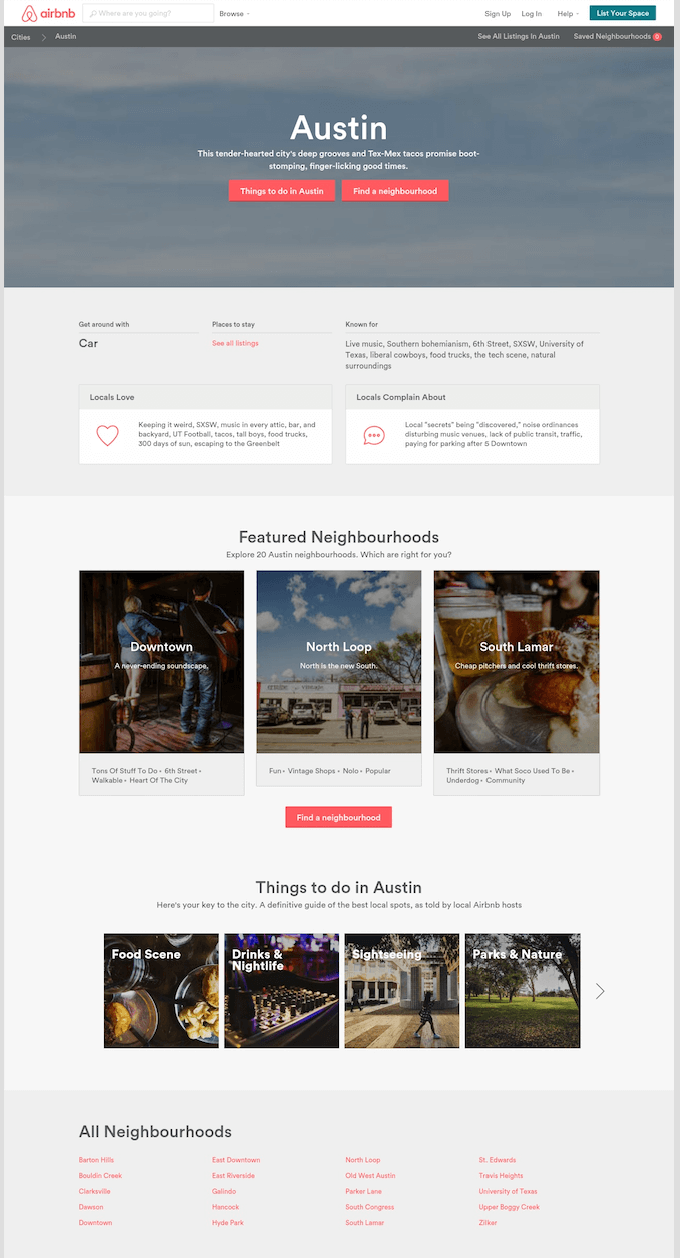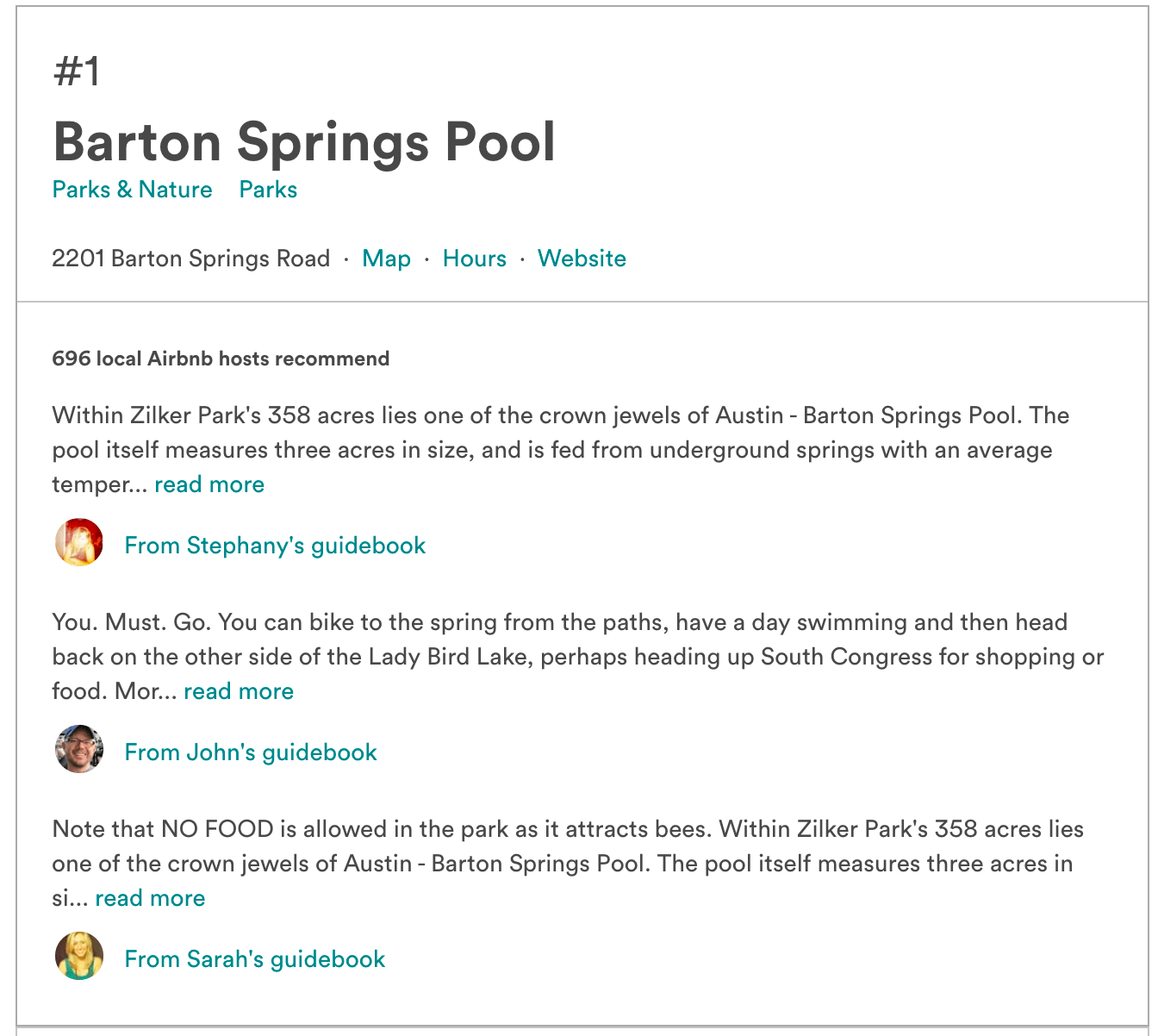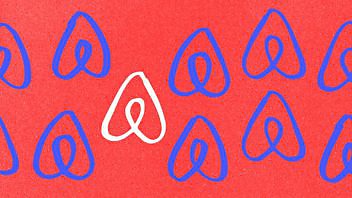
Some of the most successful content marketing in the world comes from brands that decided they weren’t just in their primary business but were also in the content business.
The most over-cited of them all, Red Bull, had no right to declare itself a content business. It was just a foul-tasting hyper-caffeinated (taurenated?) drink for young people trying to defy the laws of sleep. What the hell did that have to do with content?
They could have answered that question with, “Nothing.” and stayed a foul-tasting drink for skateboarders. Instead they made the connection, via extreme sports, to a whole world of content. And now they’re a global media brand with a market-leading foul-tasting drink brand inside. Boom.
So this installment in the smash-hit, so-damn-close-to-Oscar®-winning “Let’s Steal From” series, is about Airbnb, a brand that understands that a great way to fuel the growth of its primary business is to get into the content business.
Let’s look at how – so we can shamelessly rip the suckers off.
(Shame has no place in B2B. Get over it.)
What business is Airbnb actually in?
You could say that Airbnb is one of the world’s biggest hospitality businesses. It offers over a million properties – but doesn’t own a single one. If I were Hilton or Westin or Sheraton, I would be uncontrollably shitting myself right about now — projectile-style. (If projectile self-shitting could ever be a ‘style’).
Or you could say that Airbnb is really in the information business. Just a platform that helps hosts find guests and vice versa. Like eBay but without the crap. Or Uber without the deeply ingrained sexism.
But Airbnb is also in the content business, in a big way. They do a series called Stories and produce wonderful short films and a great blog and all sorts of fun one-offs. They also curate travel experiences like Netflix curates films.
But the thing I want to zoom in on is their City Guides. Really simple, crowdsourced city guides.
What I love about them – and one of the things I propose we all steal – is how tightly integrated their city guides are with their core business and how they become part of the product instead of just part of the marketing.
Are they the best city guides on the web? They are not.
But do they work brilliantly to serve both travelers and hosts – smoothing the path to a happy booking and positioning the brand as fellow passionate experience junkies? Well, you know what I think.
Let’s go to Austin
So you want to go to Austin (probably to visit SXSW – you call it ‘South-By’ – just after it jumps the shark). You go to Airbnb and, hey look: a city guide. Click:

This post isn’t about Airbnb’s awesome user experience. But if you want to teach UX – or more broadly customer experience – study these guys. They’ve invested in deeply understanding what people want when they travel and, more specifically, when they book a place to stay, and it shows in every single click.
Let’s take a quick tour of this page, top down:
Hero banner – Short text in friendly Airbnb voice. Bordering on cute but at least they say ‘finger-licking’ instead of ‘finger-lickin”.
Two buttons: ‘Things to Do’ and ‘Find a Neighborhood’.
Summary bar – Not sure why they say ‘Car’ in answer to ‘Get around with’. Then, discretely, a ‘Places to stay’ link (their product). And a ‘known for’ blurb.
Locals Love/Locals Hate – This is a great example of Insane Honesty – a concept that Velocity evangelizes at every opportunity. They didn’t have to mention things that locals hate but it does SO MUCH for their brand and the credibility of the guide – and the downside is… zero.
Featured Neighborhoods – We all know that cities are made up of very different neighborhoods and that your experience of the city will depend on which one you choose. But hotel guides can’t feature this kind of thing: every hotel is a single property, stuck in one place.
So featuring neighborhoods in their city guides – and in their booking path – plays straight into one of Airbnb’s killer advantages (pick your neighborhood), while delivering real value to travelers.
Things to do in Austin – Organised into four search-optmised categories.
All Neighborhoods list – A long list of links in case you know where you want to explore.
That’s the simple home page of the Austin city guide. Clean, clear and tightly woven into the brand and product.
Now let’s click in to Things To Do:
This page is also heavily search-optimised. It features a map with pins of the top attractions, then a simple list of attractions in order of how many times it was recommended. Here’s the top one:

First thing, utility: Map. Hours. Website.
Then, usability: rankings, metatags (‘Parks & Nature’ ‘Parks’), social proof (‘696 local Airbnb hosts recommend)…
Then, snippets from three hosts who included Barton Springs Pool in their own Host Guidebooks.
And this is the genius of the Airbnb City Guides: they are entirely crowdsourced from their hosts in each city.
Just as Airbnb is in the hospitality business without owning any rooms, they’re also in the content business without creating all of the content themselves.
Instead, they tap into the passion, enthusiasm and local knowledge of their host community – which boosts both the utility of the advice and its on-the-nose brand values.
And, remember, each of these snippets come from a deeper review that lives in each host’s own Guidebook – another tier of rich, community-generated content.
The City Guide and each of the many host guidebooks play important roles in different parts of the booking journey – when you’re in broad research mode and when you’re choosing a home to stay in.
Drilling down, the specific lists, like ‘Best Museums In Austin’, often rank on page one for those search terms. And they all happened because Airbnb gave their hosts an easy, self-service way to share their advice about their cities and neighborhoods.
To me, the whole operation is top-to-bottom awesome.
So what can we steal?
So you’re in the ball bearings business not the glamorous travel world. What can you steal from the Airbnb content strategy? Lots:
Get into the content business – No matter what you do, there is a content play to be played. You just have to find it and make it happen. Airbnb did not have to do any of this. They chose to.
Weave the content into your product – Don’t just think of content as a way to get people to move towards your products; think of it as a part of your product.
Put utility first – Content marketing is customer service for people who have not yet decided to be customers. Serve them with useful content that helps them do what they need to do right now.
Take a UX point of view – Don’t just lock your content up in a Resources section. Think about where it could add value through the whole buying journey. And make it available, easy to discover and helpful.
Stay on brand – Make your content a demonstration of who you are. Today, Airbnb has a super-clear brand built on the idea of bringing people together. The brand didn’t justhappen. They built it. Everything they do and every content play they make serves this. The City Guides are just one example.
Be insanely honest – The ‘Things locals hate’ box is a wonderful thing. It signals that Airbnb cares more about you choosing the right neighborhood than it does about closing the deal. It also lowers the likelihood that a guest has a bad experience. The Six Examples of Insane Honesty post has more like this.
Tap into your crowds – Is there a way for your customers to contribute their experiences? Your suppliers? Your employees? Make it super-easy for them.
Automate the machine – Once you’ve cracked your model, can you make it an automated, self-service platform? If so, you can stand back and watch people build your product and your brand for you.
Bow to Google – As we all must. Content that isn’t search-optimised is like a tree falling in the forest with no one there to hear it. (Zen spoiler alert: no noise).
Pilfer proudly – Airbnb didn’t invent a single piece of their City Guide content marketing play. They took the best pieces from lots of different places – from airline booking engines to crowdsourced restaurant guides to travel guidebooks to Amazon-style checkout paths – and put them together in a way that makes sense for their business and their users.
You don’t get points for originality. You get points for effectiveness. (These points are called ‘money’).
So happy stealing!
FOMO Rush? Here are the other ‘Let’s Steal From’ posts…
This is part of a regularly irregular series, posted, religiously, every once in a while:
The Beatles – or should we say the B2Beatles…
You may as well steal from The Simpsons – the masters of storytelling, character, humour… and stealing.
There’s one about Seventeenth Century Explorers having a rough time building audience trust.
Here’s one on The NBA – It was just basketball, then it took over the world.
There’s one about stealing from Epic Split, Jean-Claude van Damme’s only foray into B2B. (Unlike Schwarzenbeger, I have a feeling he won’t be back).
And one about stealing from The Greatest Infographic of All Time. Bar none. 150 years old. Literally epic, not just slangily epic.
And one that helps you rip off Follow The Frog, my favourite not-for-profit shaggy-dog story.
And one on stealing from great first lines of novels – so you can steal from people like George Orwell or Gabriel Garcia-Marquez.
And one about GE Aviation’s flat-out beautiful Paths of Flight video. Geek swoon.
Also this one about Icelandair‘s transatlantic content experience.
Any more?
Oh yeah, the one about Rand Fishkin and Moz’s Whiteboard Fridays, which looks SO simple and obvious and is hugely successful and deserves to be.
For God’s sake, catch up.

Enjoyed this article?
Take part in the discussion








Comments
There are no comments yet for this post. Why not be the first?